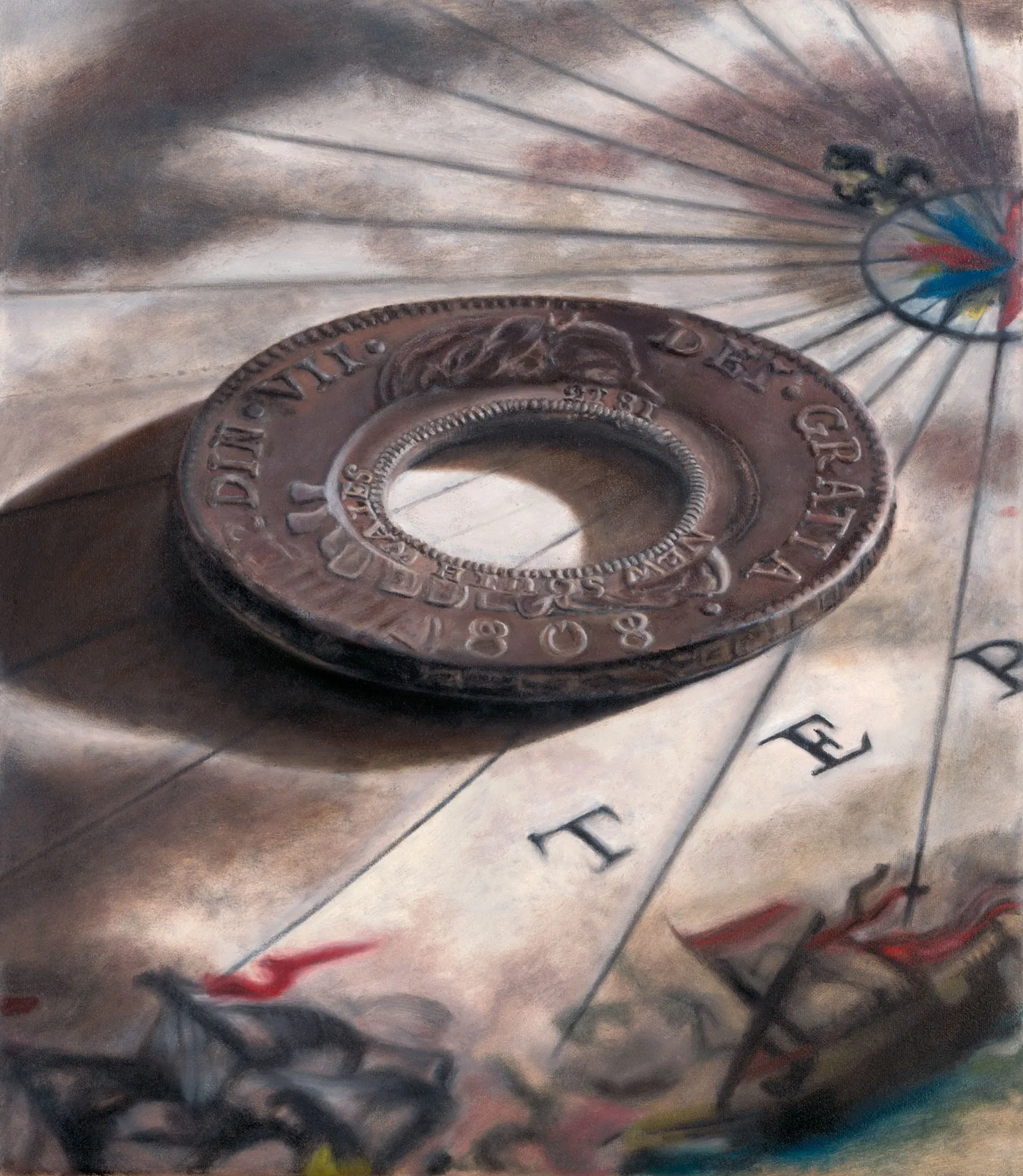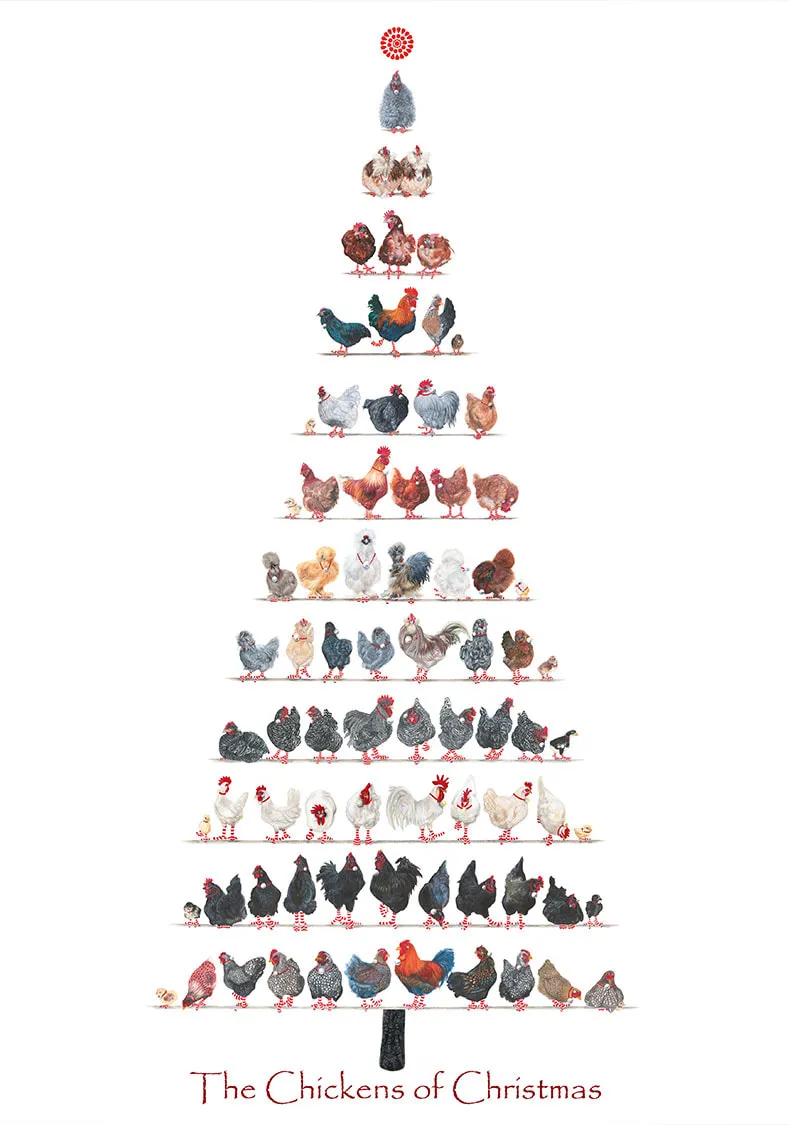Vermeer, Chickens and Coinart: My Artistic Evolution
Welcome to my first blog! I’m Sarah Braybrook, and I must admit, from the heady days of art school, I could never have predicted that this would be my story. I know you're not always meant to have life all figured out, but from Vermeer to Chickens to Coinart - it's quite a unique leap! I've always loved reading about artist journeys, they have always taught me that you can never compare, but you can always be inspired! I hope you enjoy these musings as I reflect on art school days, give you a peek into my artistic process and recount the phone call that sparked my passion for Coinart.
An enthusiasm for money started in childhood. Finding coins on the ground as a kid was exhilarating - especially around 1984 when $1 notes changed to coins, and everybody seemed to drop them! Drawing the people on paper notes and rubbing paper over coins with a pencil to reveal their designs were favourite childhood activities too. This early interest naturally led to a job in the world of numismatics right out of high school with renowned coin dealer Downie’s in Melbourne. From day one, I was captivated by these perfect little art canvases that honoured a moment in time.
Despite early exposure to coins and a growing interest in art, it took many years to combine these passions. Life had other plans, and pursuing formal art education didn’t occur until my mid-thirties. During this period of study, particularly while immersed in the works of Vermeer, I began to see art as a means to preserve and celebrate history. However, it wasn’t until later, after a series of life events and a deeper understanding of myself, that I connected the dots and realized the potential of combining fine art and numismatics.
The suggestion to attend art school came from my mentor. In 2009, I won a national competition with the Australian Society of Authors, receiving a one-year mentorship for picture book illustration. At that time, I had no formal art training; my drawings came straight from the heart, and I learned that simply wasn’t enough for the picture book game. Learning the craft via correspondence presented many challenges, and I was floundering.
I knew it, and my mentor knew it.
I bravely sent an email to my mentor asking for brutal honesty about my chances of getting anywhere in picture book illustration, and he gave me the greatest gift - a brutally honest answer. He felt that while I had many strengths, I was lacking the essential foundational knowledge required to survive in a competitive industry and would benefit from going to art school, where I would be immersed in an environment with access to constant feedback and surrounded by like-minded people.
I was gutted.
I had failed.
Again.
I was on the kitchen floor of my rental.
Sobbing.
A solo mum of three young kids, struggling to do life well, and now this.
The one thing I had wanted to achieve so badly, and it wasn’t going to happen. How could I even think about going to art school? I was as good as broke.
Everything seemed to collapse to the lowest point.
I read my mentor’s email over and over, and through the tears at my pity party on the kitchen floor, suddenly as clear as day, I saw the honesty in his answer that I was craving to move me forward. I got up, dusted myself off, and jumped on the computer to Google ‘art schools in South Australia.’ Wouldn’t you know it, the very next day happened to be an open day at the Adelaide Central School of Art!
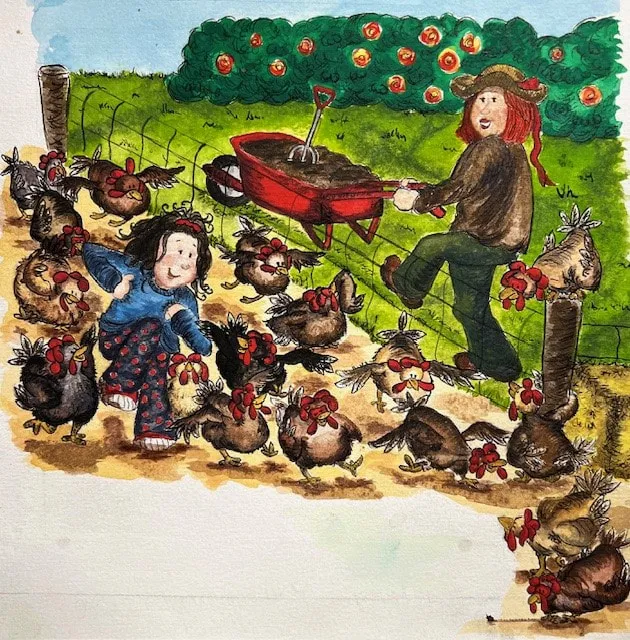
A page from my Picture Book Illustration mentorship in 2009-2011, where the Chicken art 'thing' began.
The instant I set foot in ACSA, it felt like home and that open day changed the course of my life. By the afternoon, I had filled out an application to study fine art full time, and weeks later, was accepted as a mature-age student.
Art school was thrilling. It was hard. It was expansive. And it was so incredibly rewarding. The teachers were all artists and phenomenal in their field of expertise, the friendships made were invaluable, and the learning was out of this world! We would always pop into other classes and check out what projects were going on. One particular day in first year, I saw a lady in second year painting this girl. Ok, I was very green and could not recall ever seeing this image before, but apparently, it was very famous: Vermeer’s ‘Girl With a Pearl Earring.’
I was instantly enamoured by this painting. Mesmerised. Maya Angelou’s quote ‘people never remember what you said, but they always remember how you made them feel' - this painting made me feel something that I could not explain. When I was in second year and would have to choose an Old Masters painting to study and recreate, that would be my pick.
And so it was.
Studying Vermeer in second year was a highlight of art school, and I didn’t know it at the time, but his technique and style would become a huge influence in my own art practice. When you look closely at Vermeer’s work, there are no hard edges - everything blurs seamlessly together. As you can see in the images below, the edge of the girl’s garment and turban bleeds into the dark background. Her lips, cheeks, eyes, and nose are so soft it’s like they melt into her milky skin tones - and the shadow work is also soft and beautifully blended. The effect is alluring. Vermeer’s soft outline technique was achieved by a gradual change in the composition of the top paint layer - a translucent glaze with little colouring matter and rich in medium. According to ‘Vermeer Studies,’ experts believe it was Vermeer’s use of Venetian turps (a slow-drying, resinous oil painting medium ingredient) that caused his glazes to melt into one another and caused edges of painted areas to bleed slightly into their surroundings.
Check out the progress shots below of my second year art school project. I chose to recreate Vermeer's 'Girl With a Pearl Earring' using only traditional techniques, including his soft outline approach.
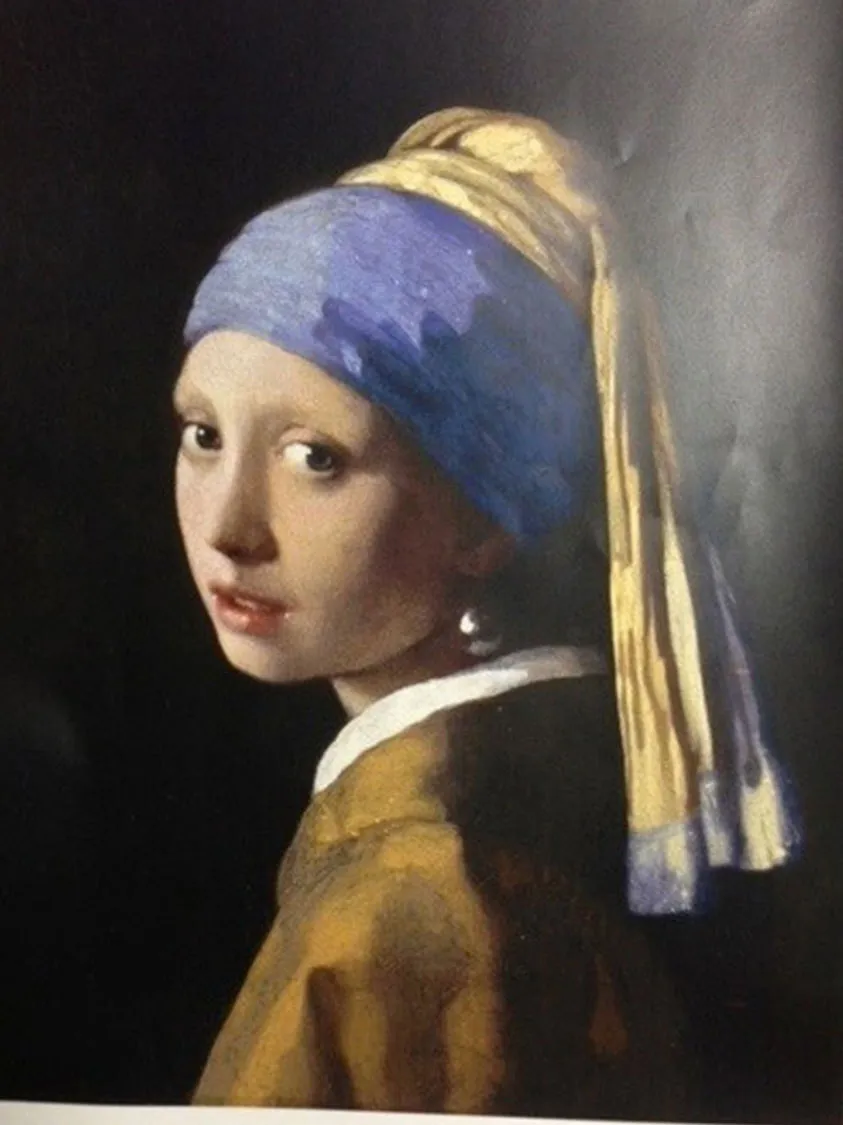
Original reference image - high quality reproduction print - pre iPad era
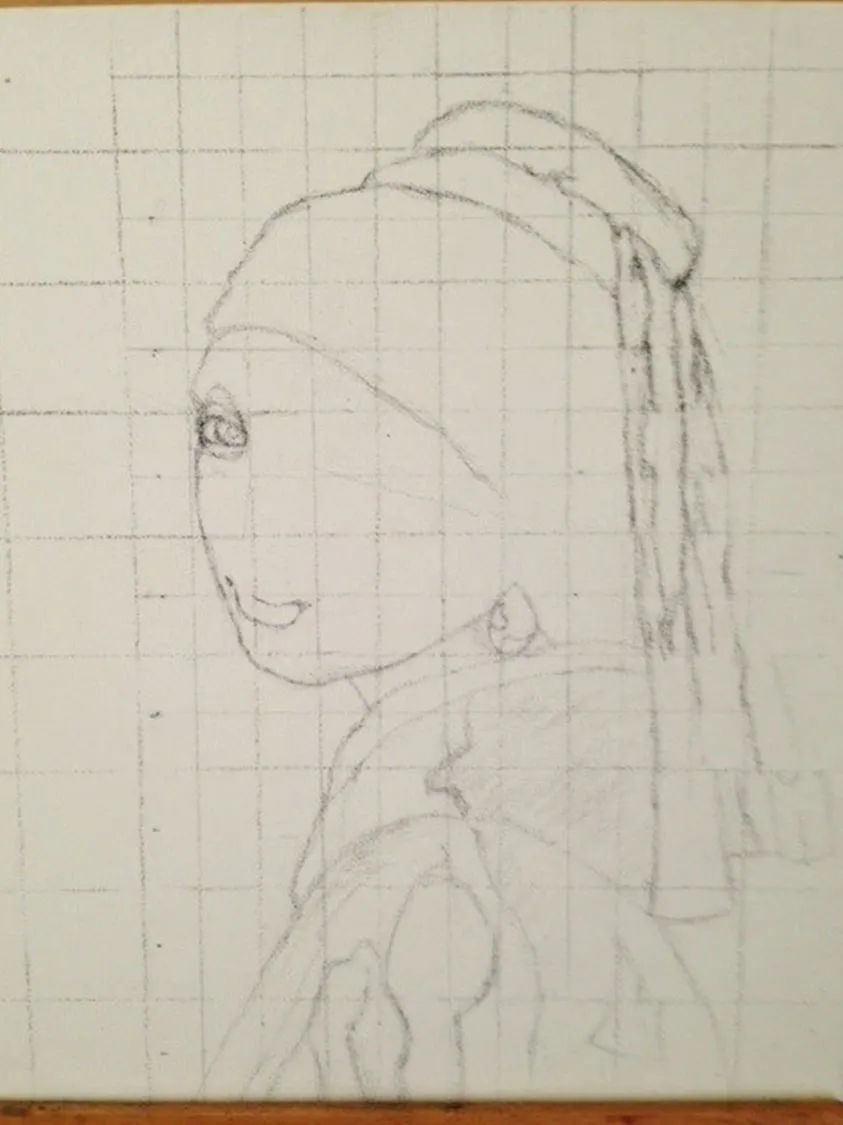
The canvas size was custom built to match the original painting - 44.5cm high x 39cm wide. Drawing up was with charcoal, using the grid method
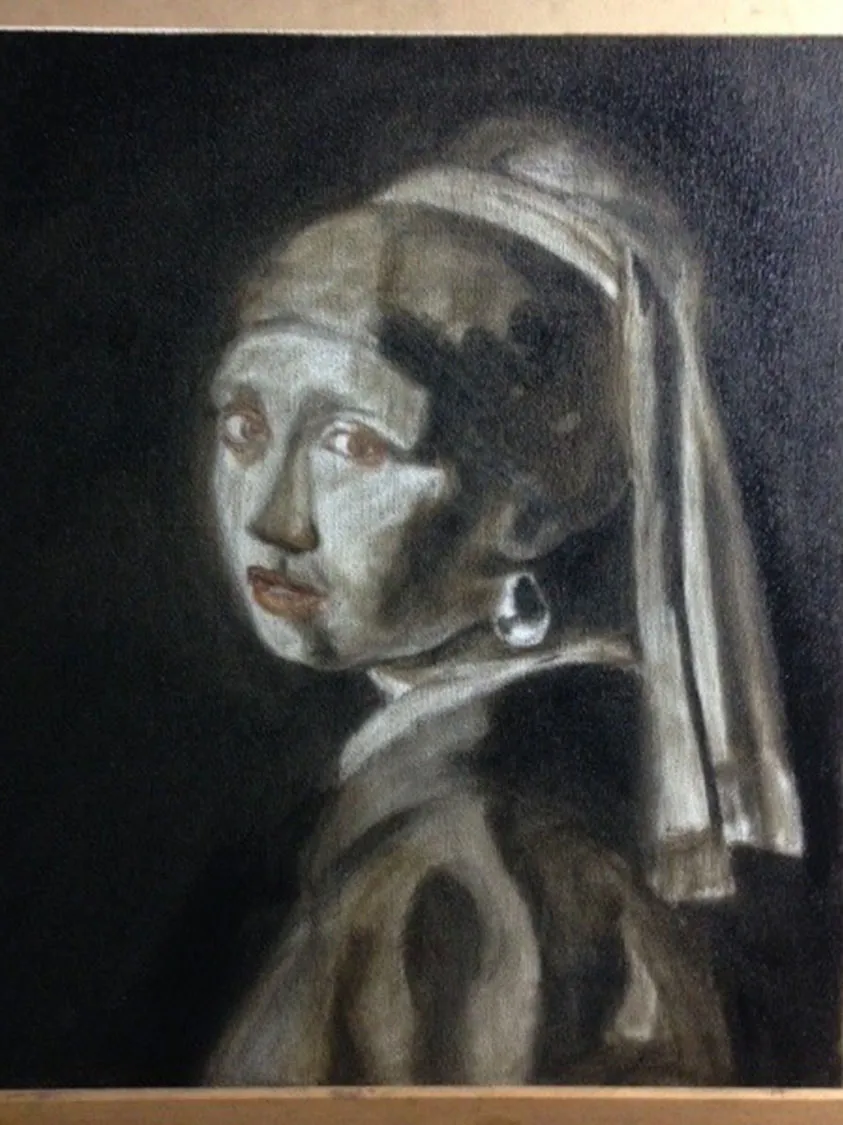
Under painting was built up using carbon black, lead white and brown ochre (raw umber) oil paints with a touch of red lake on eyes and lips
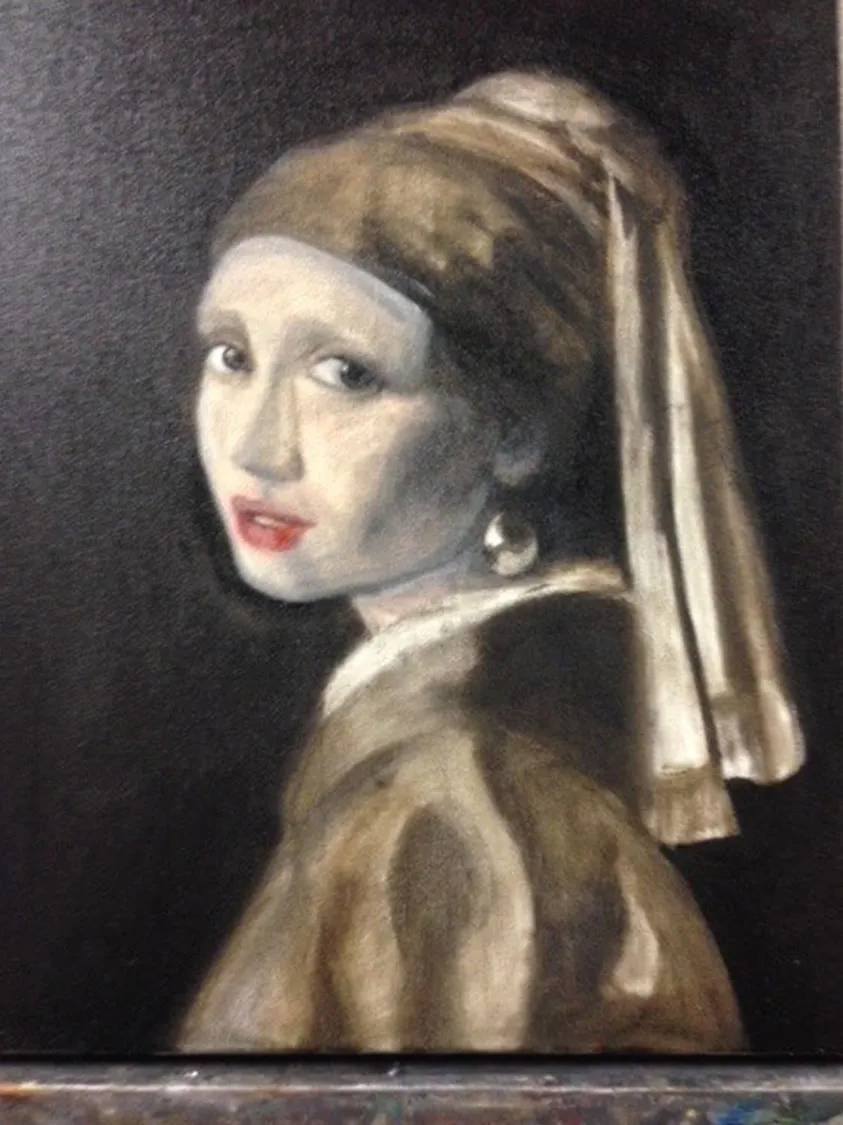
The original background was an even, smooth, glossy, translucent hard green paint, made to look darker and given depth by a dark underpin
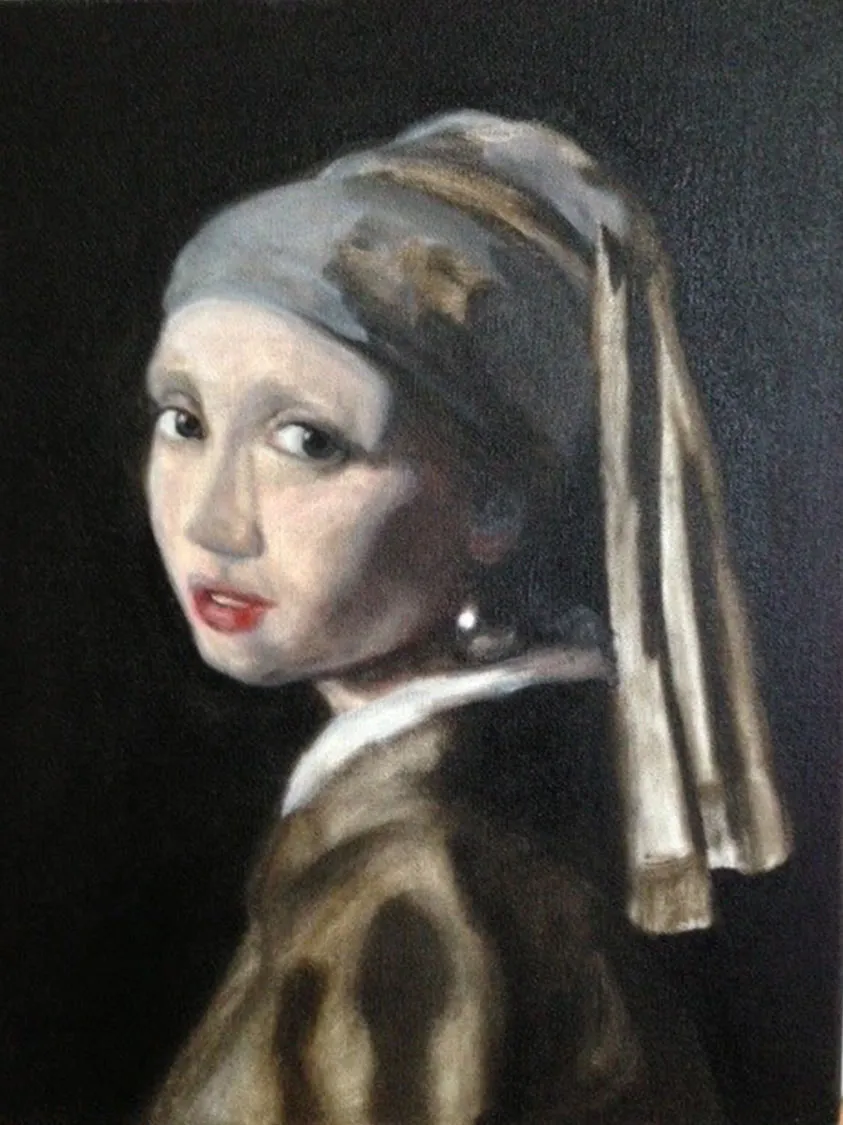
In the girl's blue turban, ultramarine was the main component, mixed with a yellow ocher, an organic red, and some lead white.
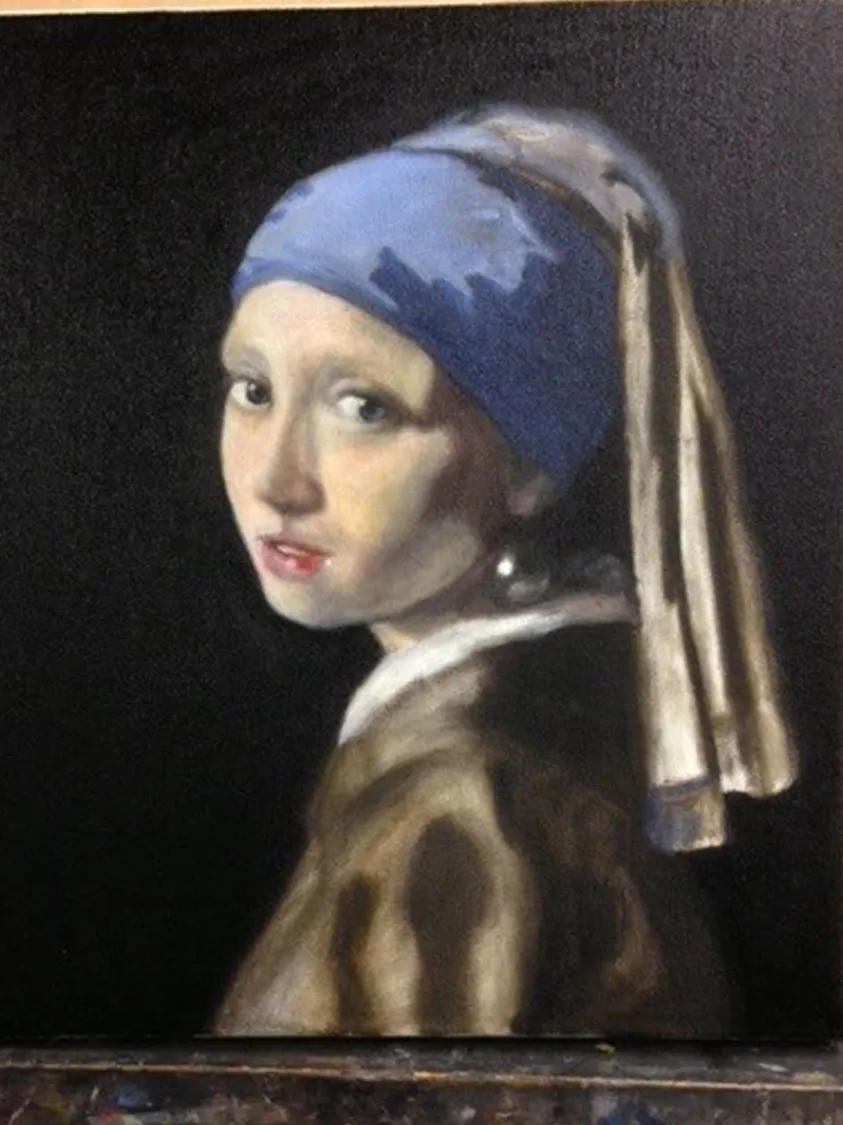
Vermeer used several layer structures in the face, with deeper shadows on her cheek and neck being underpinned with a reddish brown.
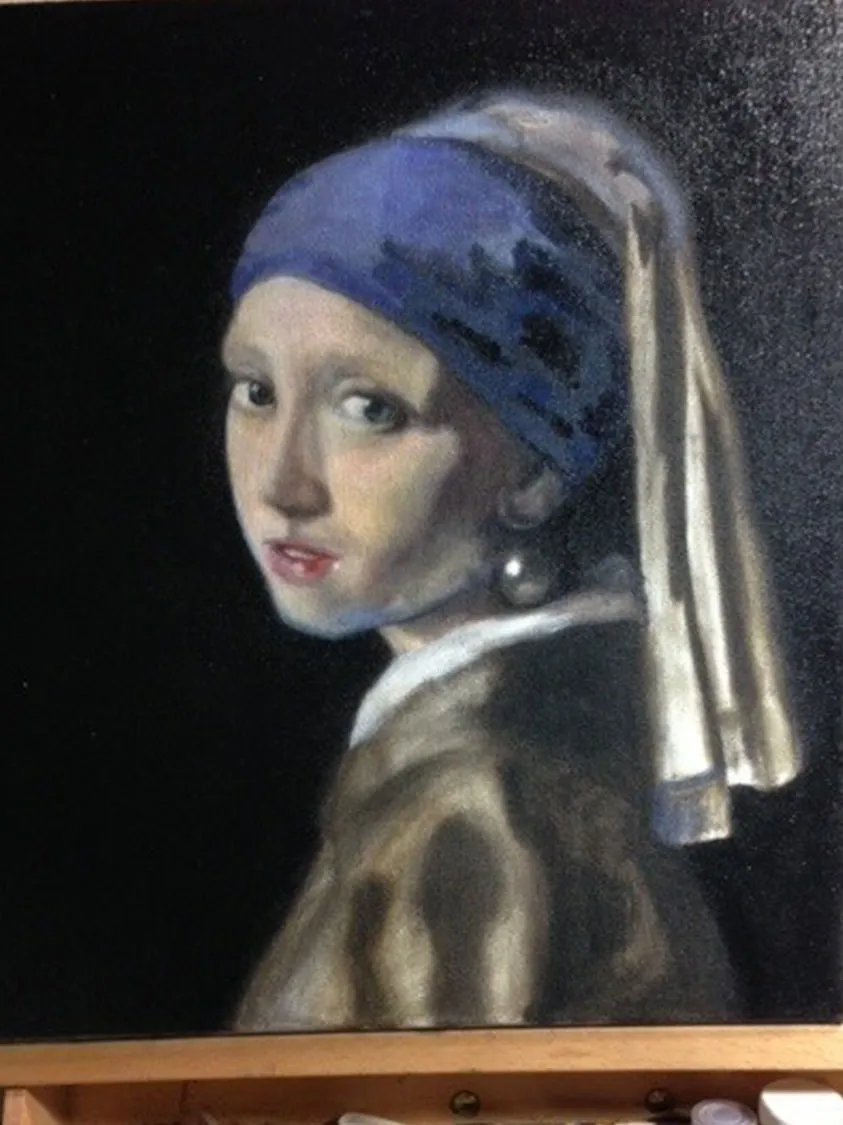
The girls skin tone is almost pure white with a glowing pink surface layer containing vermillion
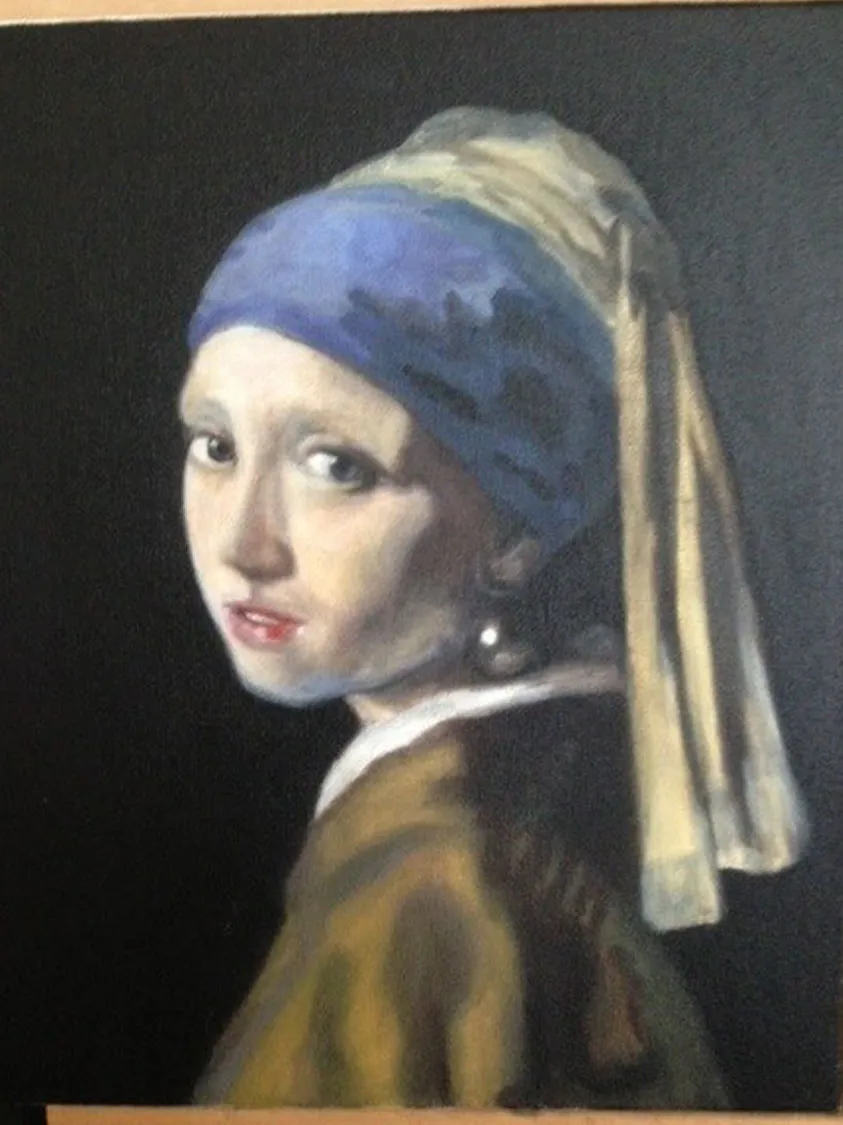
To obtain different tones in the yellow jacket, very finely ground yellow ochre was mixed with some lead white and ultramarine paint
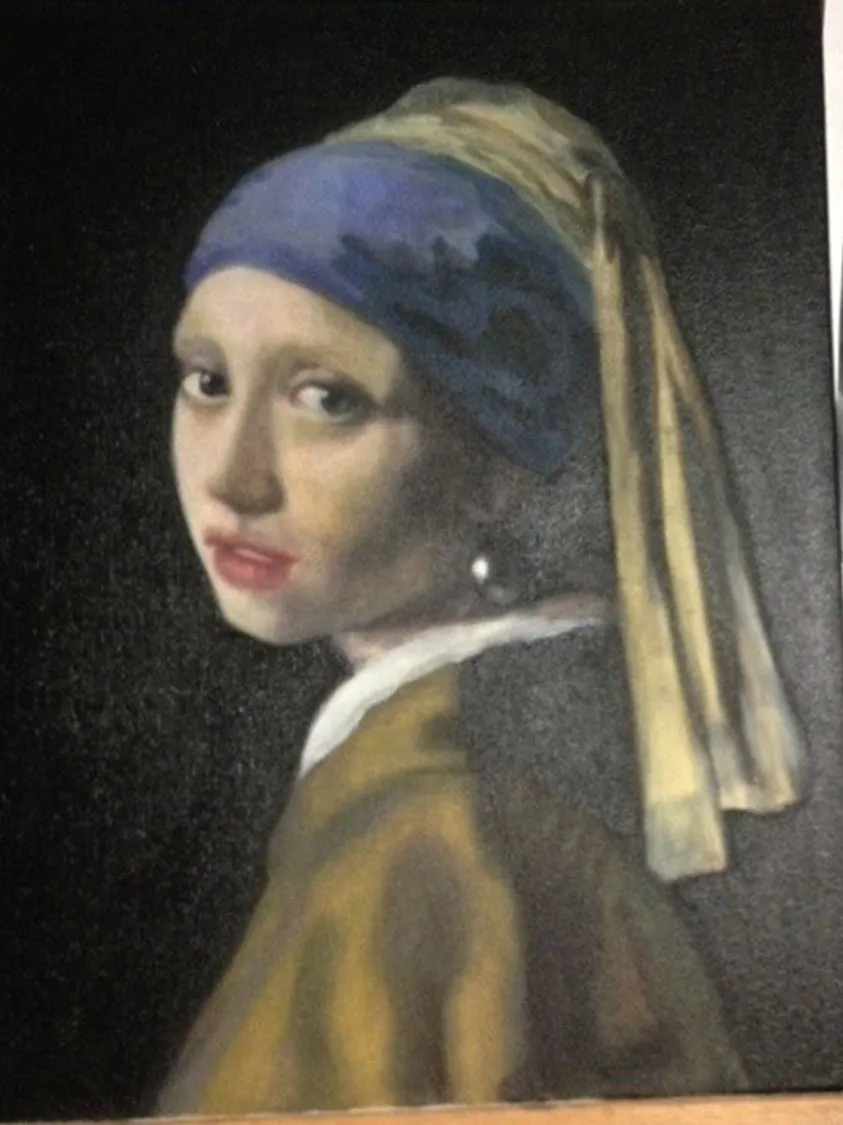
Refining of the lips to make them appear fuller, whilst blending in to her milky white skin tones made a huge impact on the final piece
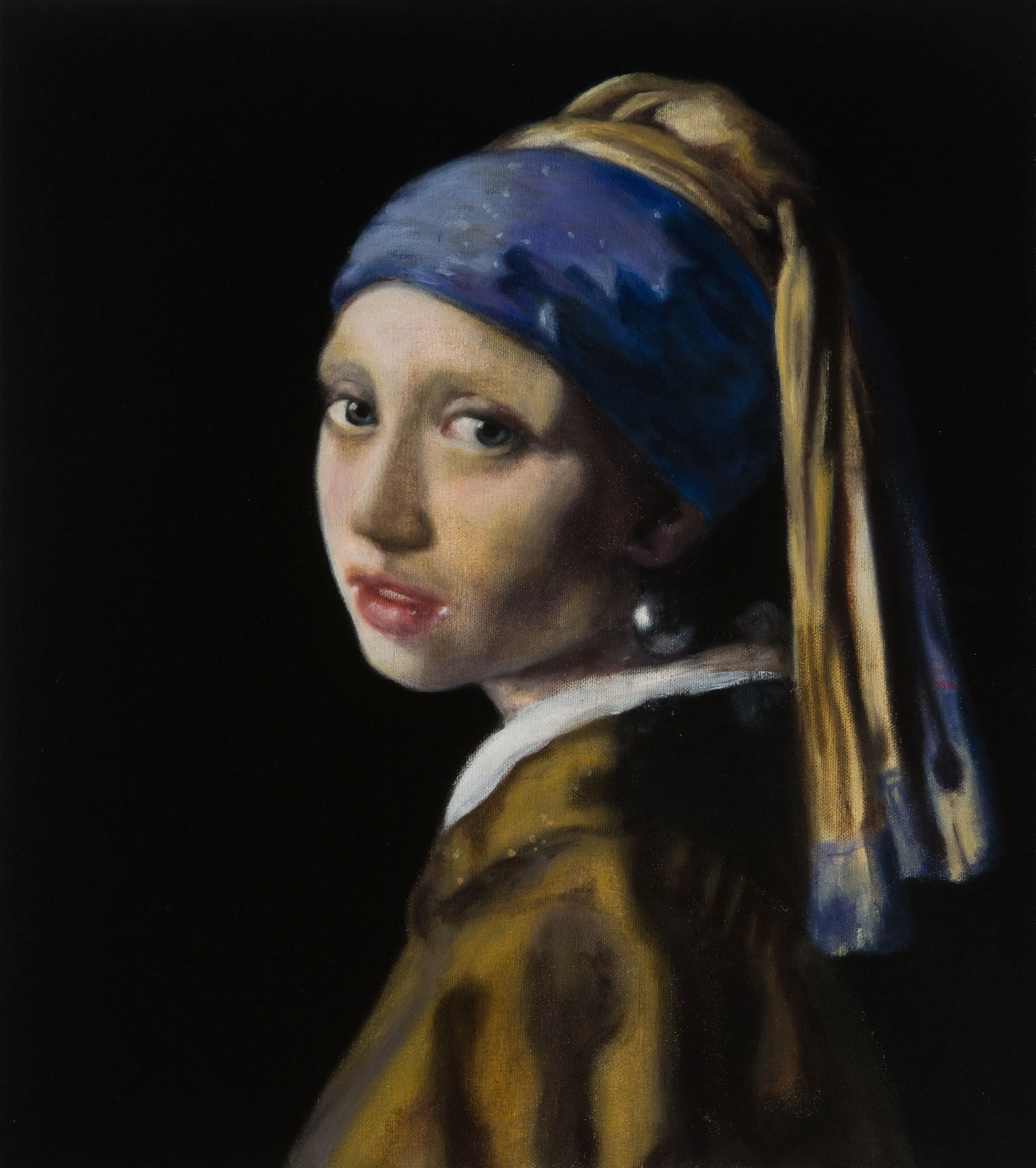
This was the finished project of 'Girl With a Pearl Earring', where I was introduced to Vermeer's 'soft edge technique'.
After two incredible years of art school, life began taking me in a new direction, and I decided to leave ACSA without achieving a degree of any kind. I didn’t view this as a failure, as everything leads to the next thing.
In 2016, receiving a phone call from my first boss, mentor, and long-time friend Belinda Downie, everything changed. ‘Brookie, do you think you could paint a coin for me?’ In that second, I was a little perplexed, trying to figure out the logistics around painting on such a tiny canvas. She then went on to explain how she had rare coins professionally photographed on old world maps, and thought it would be interesting to have an image of a Holey Dollar - the nation’s first official coin - immortalised as an oil painting. ‘Sure,’ I said, thinking, how the heck am I going to achieve this? After all, I hadn’t used oil paints for a while since the discovery of gouache and colour pencil in life after Art School.
This project was a spark and it excited me. Planning this new work, I knew that the skills acquired from ‘Girl With a Pearl Earring’ would be perfect for executing this painting. Choosing oil paint was the perfect medium and language to use for representing a significant historical subject. Like ‘Girl with a Pearl Earring,’ both images had an obvious focal point, there was strong shadow work in the composition, and I could apply the soft edge technique to engage the viewer. This was the ideal opportunity to apply knowledge gained from Art School to an original collaborative work - from the size of the canvas, to the underpainting technique, right up to the top glazed layer.
This collaboration with Belinda saw me travel to the 2016 Perth ANDA (Australian Numismatic Dealers Association) coin show where the original Ferdinand VII Holey Dollar (back then valued at over $400,000) was on display alongside the oil painting. The event was a resounding success, and after not participating in a show for years, I realised how much I had missed the coin world. The coin painting had been an amazing experience, but at that point, this Coinart was a one-off. A few weeks after the Perth ANDA show, Belinda offered me a role with Coinworks as she began to expand her website and marketing, which I accepted.
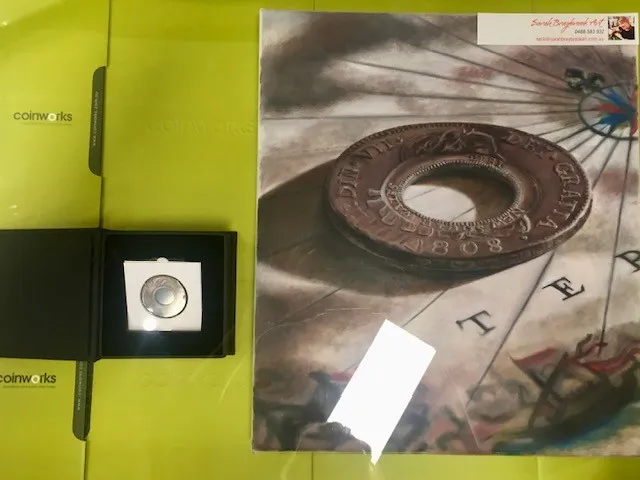
The original Holey Dollar coin and painting on display at the 2016 Perth ANDA show
Check out the making of this painting. The youtube video is circa 2016 and recorded with an iPhone 4, but you get the gist!
Art was still very much something I was doing on the side, taking on all sorts of random commissions, attempting to consolidate a style and find my way.
Something that became apparent was that I was being asked to do a lot of chicken drawings. I had found a really great blending technique using colour pencil over gouache, each new piece of work was refining my skill, using this different medium combination. The work that brought everything together was one of my favourite projects - ’The Chickens of Christmas’. I literally poured my heart and soul into that artwork of 72 individual Christmas Chickens to form the shape of a Christmas tree, all with the Vermeer soft edge. The project was a parody of the Twelve Days of Christmas, which was playful and a whole lot of quirky fun.
Experimenting on Instagram and creating social media around my Chicken theme was fun and terrifying all at once, and I was also enjoying learning about the digital online space. After a couple of years, though, the spark went out for the Chooks, as personally, I was struggling with the loss of my beautiful Mum.
I needed time.
Working on a daily basis with the stunningly beautiful images of coins that Belinda curates for the Coinworks website, I am still bewildered by how much beauty and design can be portrayed on such a tiny piece of metal, especially considering the years some coins were produced and the rudimentary equipment available to make them back then. My favourite is the Adelaide Pound. I love the story that surrounds how this coin came about back in 1852 and saved the South Australian economy in the cleverest of ways, which you can read about here by Coinworks. The design of the Type I and Type II is exquisite, and it was an absolute honour to be asked again by Belinda late last year to paint the Adelaide Pound Cracked Die.
Seven years had passed since the first Holey Dollar painting. Did I still have what it takes? Collectors love detail, and I questioned myself daily during this project. Was I doing justice to the coin with my use of oil paint? Was my interpretation of the Adelaide Pound respecting what the original engraver Joshua Payne had achieved to produce the dies? Did the fall of light make sense from the reference image supplied by Coinworks? Was the colour palette accurate enough? Is the detail of the coin precisely depicted? Every day, there were new questions, but the one thing I never questioned was the Vermeer soft edge technique, which now comes naturally when I create.
Below are some progress shots from the Adelaide Pound project, which has reignited the spark for creating oil paintings of Australian Pre decimal rare coins.
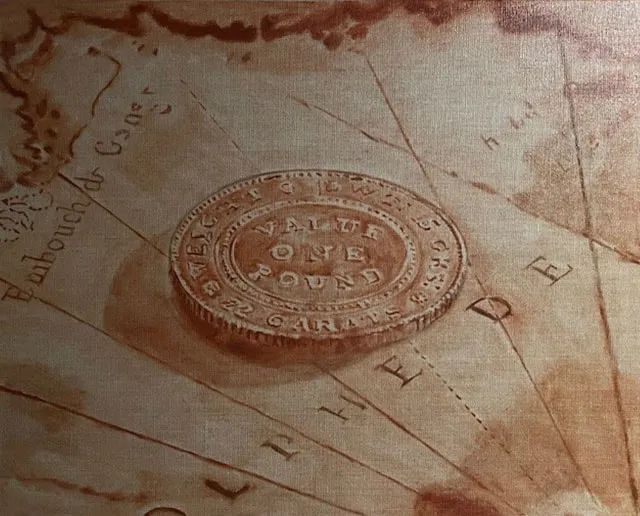
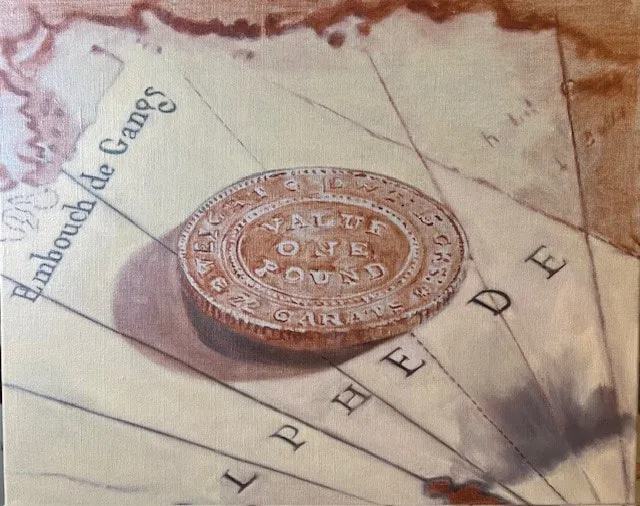
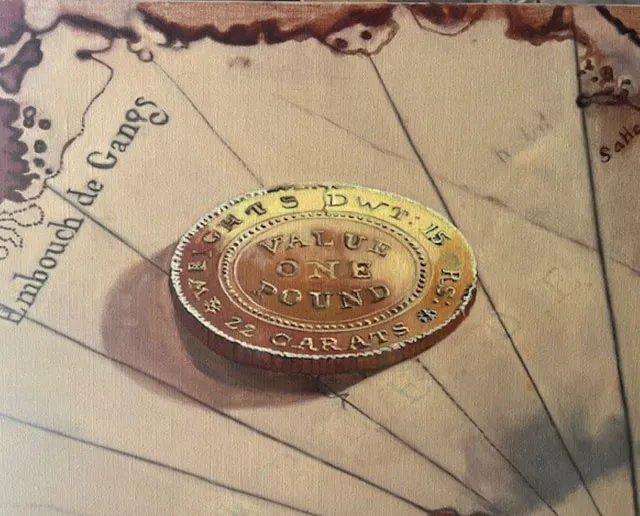
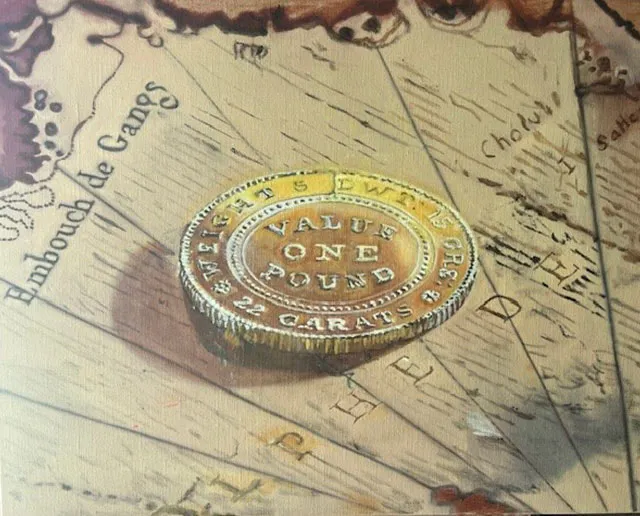
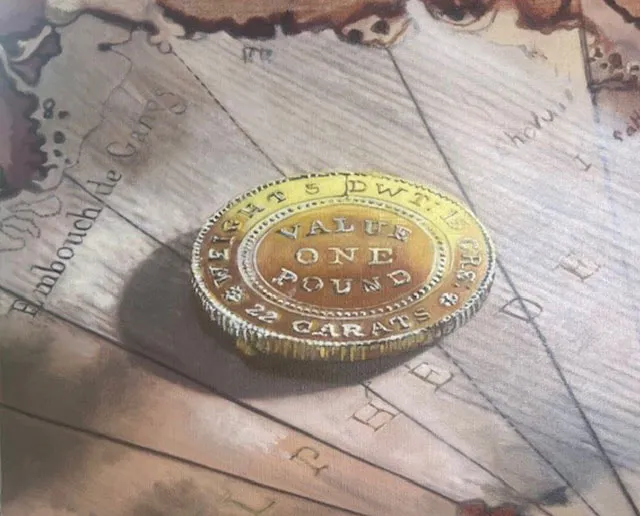
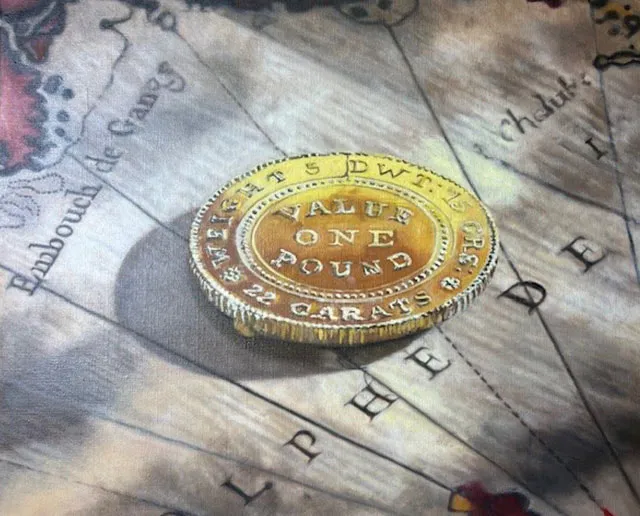
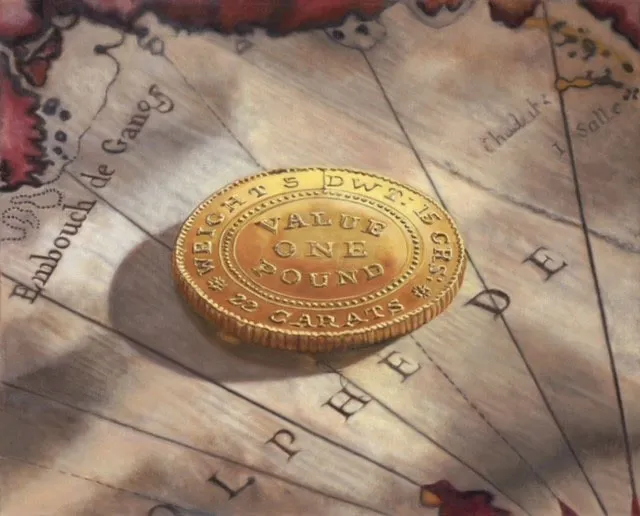
The finished product of an 1852 Adelaide Pound, cracked die - commissioned by Coinworks
The unwavering passion for coins that has been there since I was a kid has come full circle. From early banknote drawings and coin rubbings to collaborating with Coinworks and creating unique artworks, everything feels aligned. The spark within has found the right fuel, creating a burning desire to paint again. If I had given up that night on my kitchen floor, there would be no arriving here. I may never have found out about the girl in that famous painting, which has influenced my artistic style so greatly. There is no such thing as failure - every step is a necessary part of finding your way and becoming the person you were always meant to be, so you can have the life you were born to have.
As I continue to explore the fascinating intersection of fine art and numismatics, I invite you to join me on this journey. Whether you're a coin enthusiast, an art lover, or simply curious about the stories behind these historical treasures, there’s something here for you. Dive into the world of rare Australian pre decimal coins through my eyes and discover the beauty and history they hold.
Stay connected and be the first to know about new blog posts, upcoming projects, and exclusive insights by joining my mailing list, or come and say hi over at hello@sarahbraybrook.com
Until next time, keep discovering the beauty of Coinart.

